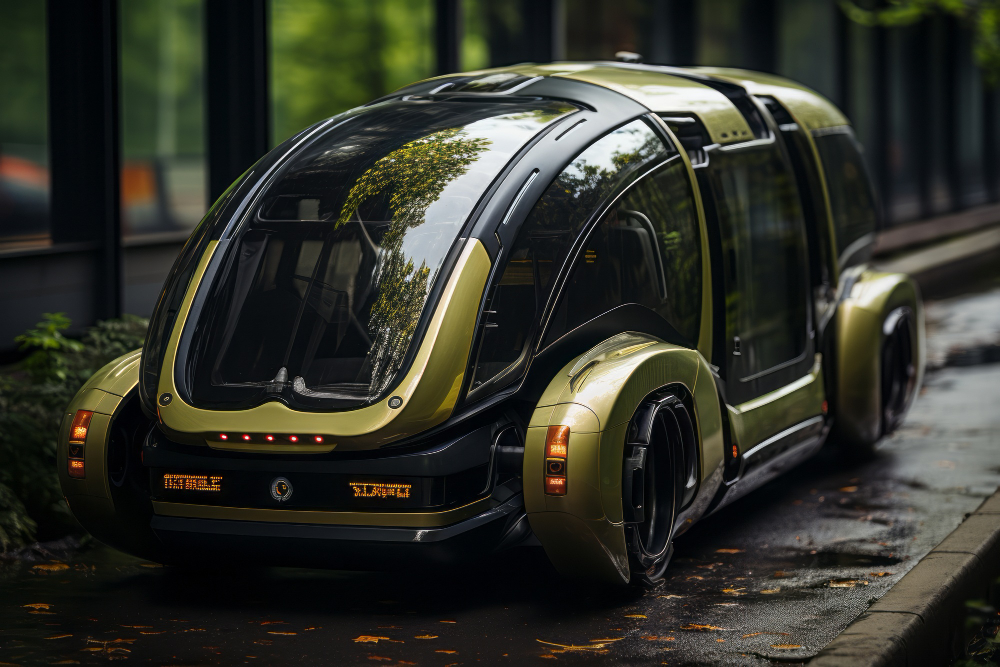Introduction: The Bay Area’s Race Toward Autonomy
From Mountain View’s Googleplex to Palo Alto’s electric car labs, the San Francisco Bay Area is the nerve center of the global autonomous vehicle (AV) revolution. Companies like Waymo, Zoox, Cruise, and Tesla are racing to define the future of self-driving mobility. But there’s one formidable bottleneck slowing them all down: the integration of advanced sensors—LIDARs, radars, cameras, ultrasonic systems—into a unified, real-time perception architecture.
For Chief Digital Officers (CDOs) at AV companies, this challenge is not just technical—it’s strategic. It demands a fine balance between hardware interoperability, edge AI processing, sensor redundancy, real-world safety validation, and data governance.
This article offers a deep, nuanced playbook for CDOs in the Bay Area tasked with transforming multi-sensor chaos into intelligent, reliable autonomy.
1. The Sensor Stack: Promise and Complexity
Autonomous vehicles must perceive their environment with near-human accuracy—if not better. This is why the AV sensor suite is a layered orchestra of technologies:
-
Cameras offer detailed visual data (colors, signs, lane markings)
-
LIDAR maps surroundings in high-precision 3D
-
Radar penetrates weather and lighting conditions, measuring speed and distance
-
Ultrasonics are essential for short-range awareness, especially in parking and low-speed navigation
The challenge? Each sensor has different data formats, bandwidths, latencies, and noise levels. CDOs must design architectures that fuse these data streams in real time with deterministic performance guarantees.
2. The Key Challenges Bay Area CDOs Must Tackle
a. Sensor Fusion Bottlenecks
-
Combining data from LIDAR, radar, and cameras involves handling petabytes of information per vehicle per year
-
Achieving low-latency sensor fusion at the edge without overheating or exceeding power budgets remains a major issue
Example: Waymo’s fifth-generation sensor stack had to be redesigned to reduce processing overhead while improving object detection by 20%
b. Cost vs. Capability Trade-Offs
-
AV startups in the Bay Area often over-design sensors for performance, leading to BOM costs that don’t scale
-
Investors are now demanding leaner, production-ready sensor configurations that balance safety with economics
Insight: Cruise reduced its LIDAR footprint by combining data from overlapping radars and cameras, lowering per-vehicle cost by $3,000
c. Edge Processing and AI Constraints
-
Real-time decision-making requires edge computing with multi-modal AI models that are both fast and power-efficient
-
Training these models across diverse weather, light, and traffic conditions requires massive simulation and real-world validation infrastructure
Case Study: Aurora uses edge AI accelerators + cloud feedback loops to continuously retrain its AV brain from field data collected in SF’s urban density
d. Data Management and Simulation Overload
-
With each AV generating 4-5TB of data daily, managing, labeling, simulating, and version-controlling this data is a massive task
-
Sensor validation must be done in both real-world conditions and high-fidelity digital twins
Example: Zoox built a real-time simulation loop between its AV fleet and cloud-based scenario engines, testing edge cases like SF’s hilly intersections and fog
3. Technology Solutions CDOs Are Exploring
a. Modular Sensor Architectures
-
Allow upgrades/swaps of sensors without redesigning the full stack
-
Ensure forward-compatibility for better sensors, more efficient chips, or regulatory updates
Bay Area Trend: Multiple AV startups now adopt “sensor hub” approaches that centralize data pre-processing before feeding to perception AI
b. Real-Time Sensor Fusion at the Edge
-
Leverage dedicated fusion FPGAs or neural compute units for faster onboard decisions
-
Offload non-critical insights to the cloud for retrospective learning
Toolchain Stack: NVIDIA DRIVE, Intel Mobileye EyeQ, and Ambarella CVflow dominate Bay Area deployments
c. AI-Powered Sensor Validation
-
Use AI to detect sensor anomalies and miscalibrations in real-time
-
Employ machine learning to auto-label scenes and accelerate AV model training
Example: Tesla’s “shadow mode” runs parallel predictions and flags perception mismatches for offline analysis
d. Digital Twins and Scenario Testing
-
Create 1:1 simulation environments of SF’s neighborhoods, crosswalks, and weather
-
Run millions of edge cases before updating real-world fleets
Technology Players: Applied Intuition, Foretellix, Cognata—all Bay Area-based simulation firms feeding AV validation
4. The Role of Virtual Delivery Centers for Bay Area CDOs
What is a Virtual Delivery Center (VDC)?
A Virtual Delivery Center is a remote, scalable, AI-powered execution hub that enables companies to:
-
Rapidly deploy specialist talent and digital tools
-
Build custom pipelines for sensor integration, AI model development, simulation, and validation
-
Iterate faster, reduce in-house load, and accelerate go-to-market
How VDCs Help Solve AV Sensor Integration Challenges
1. Sensor Fusion Architecture Design
-
VDCs bring system architects, embedded engineers, and hardware experts to design low-latency fusion systems
-
Tailor real-time software stacks for multi-sensor synchronization, calibration, and failover
2. Edge AI Optimization
-
VDCs deploy deep learning engineers and edge AI specialists to compress and optimize perception models
-
Implement hardware-aware model tuning to reduce heat, power, and cost at the edge
3. Simulation and Validation Loops
-
VDC teams manage scenario generation, corner case testing, and simulation orchestration
-
Seamless integration with tools like CARLA, PreScan, or Cognata for urban-specific testing in SF and nearby cities
4. Data Infrastructure and Governance
-
VDCs offer data engineering pipelines for secure AV data ingestion, labeling, storage, and versioning
-
Implement real-time feedback loops between fleet data and perception model training
Why VDCs Fit Perfectly with Bay Area AV Companies
-
Remote-first: Compatible with distributed engineering teams across SF, San Jose, Palo Alto, and Mountain View
-
Fast-scaling: Adds expert bandwidth without headcount or burn risk
-
Output-oriented: Focused on deliverables like sensor firmware, perception models, or test suite execution
Case Insight: A mid-stage AV startup in Sunnyvale used a VDC to compress its sensor fusion latency by 18%, helping meet the performance criteria for a major OEM partnership in Europe
Conclusion: From Chaos to Clarity
As the Bay Area continues to lead the global AV revolution, the companies that win will be those that solve sensor integration at scale—with clarity, efficiency, and adaptability.
For CDOs, this means balancing hardware complexity with AI sophistication, ensuring sensor data translates to safe decisions under real-world conditions, and delivering at production-grade readiness.
Virtual Delivery Centers provide the speed, talent, and modular execution power needed to move fast without breaking things.
In a world where data floods every port and every second counts, the CDOs who master the orchestration of sensors, compute, and software will shape the autonomous era—not just survive it.

